Mid-winter bird count on the Carpathian lower Danube 2010
We made the annual midwinter waterbird count on the lower (Carpathian Basin section) of the River Danube from Orsova to Bazias. This c.130 kilometer stretch of Danube usually holds 25,000-30,000 waterbirds in winter. Numbers also depend on ice cover of the upper Danube sections (mainly in Hungary) as well as the weather generally.
This year the count was 24,632 waterbirds, of which the outstanding result was the record number of Pygmy Cormorants. We counted a total 3,766 birds at their roost, which also represents the biggest ever flock of this species in the Carpathian Basin and the grand total for this species was 3988.
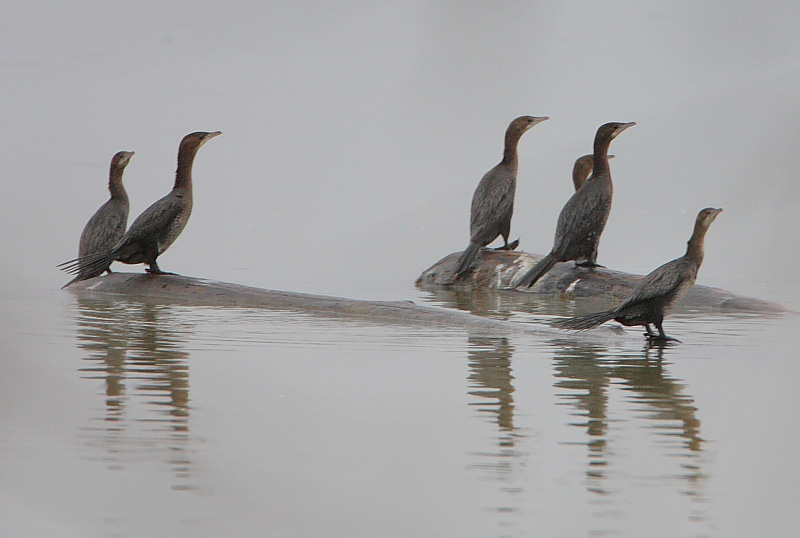
Pygmy Cormorants along the Danube Photo: János Oláh
Other highlights included 15 divers, 10 Scaup, 9 Velvet Scoters, 8 Red-breasted Mergansers, 887 Smews and several Sombre Tits. The latter is a rare and restricted breeding bird in the Carpathian Basin. The mammal highlight was a superb lynx in the Bihar mountains on our drive to the Danube near the village of Halmágygórós (Grosi).
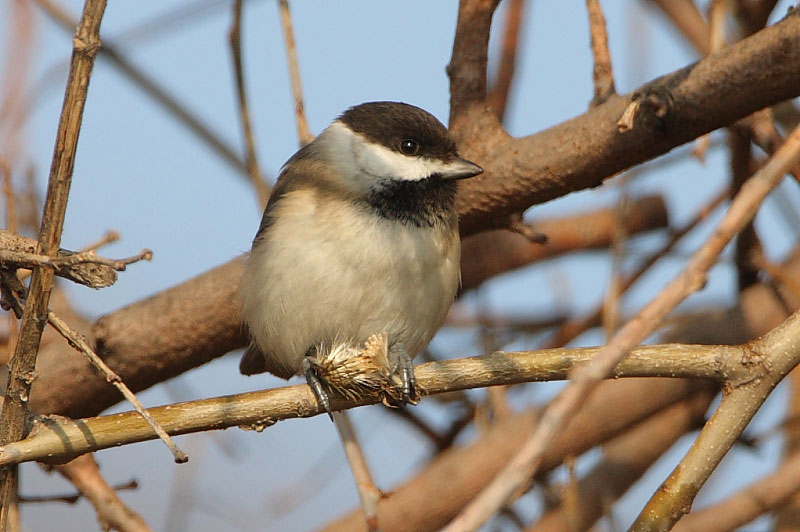
Sombre Tit Photo: János Oláh
Sakertour team
Oriental Turtle Dove in the Carpathian Basin!
There is a second calendar year Oriental Turtle Dove of the ´meena´ form near Lake Fertő in Hungary. This is the second ever observation of the species in both Hungary and the Carpathian Basin. The last record was on the 18th December, 1985 and it was not twitchable!
This superb bird was found by Sándor Mogyorósi the 11th of January so our great thanks goes to him!
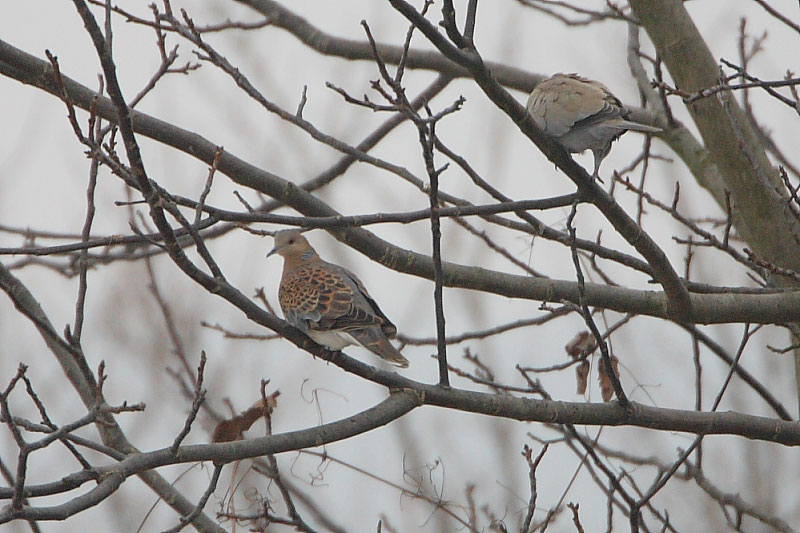
Oriental Turtle Dove Photo: János Oláh
Sakertour team
Eagle news 2010 Januar
The winter in Hungary is certainly varied this year (2009/2010)! It changes almost weekly and we are having all sorts of precipitation (rain, sleet, snow, ice, sleety rain) – we have had a lot! Unfortunately a rapid change does not help with the eagles and they can be rather unpredictable. Most of the time, however, at least one hide is visited by the eagles. See a few images below which were made in the last two weeks. Lots of images are due to be uploaded into our galleries so please keep checking:
http://www.sakertour.com/hidegallery.php?hide=1
http://www.sakertour.com/hidegallery.php?hide=19&author=&text=
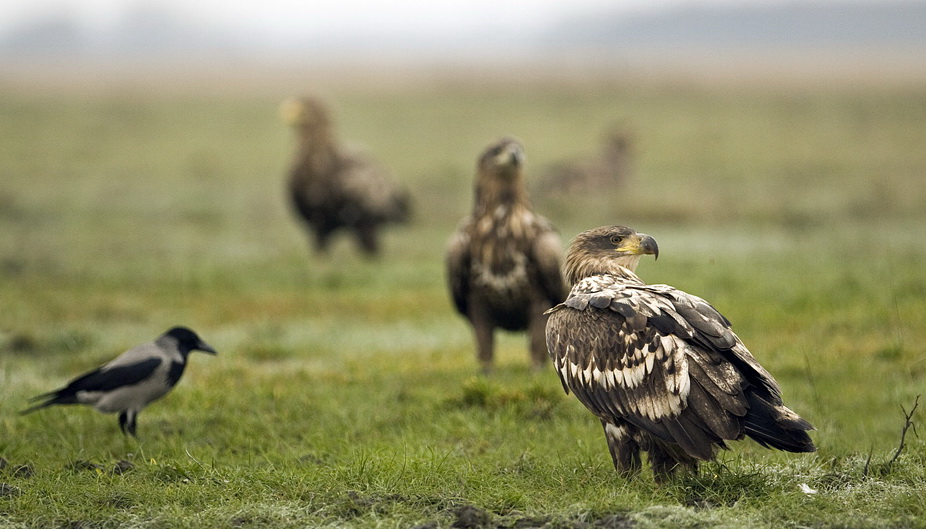
White-tailed Eagles Photo: Attila Szilágyi
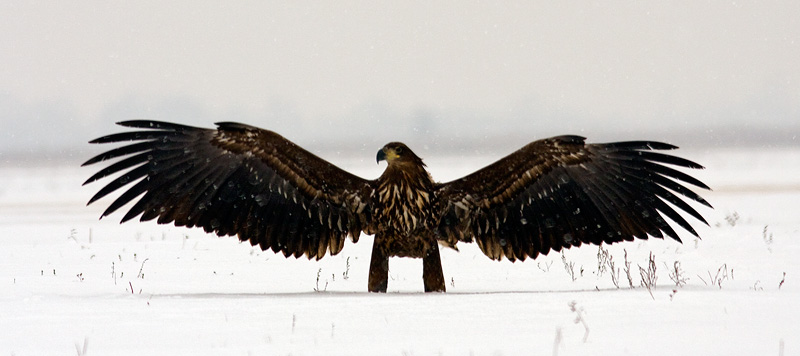
Juvenile White-tailed Eagle landing at eagle hide II. Photo: Attila Szilágyi
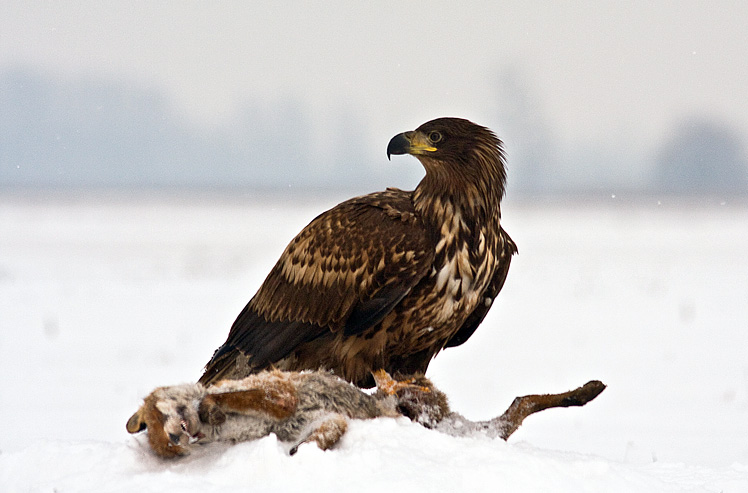
Juvenile White-tailed Eagle on a dead fox at eagle hide II. Photo: Attila Szilágyi
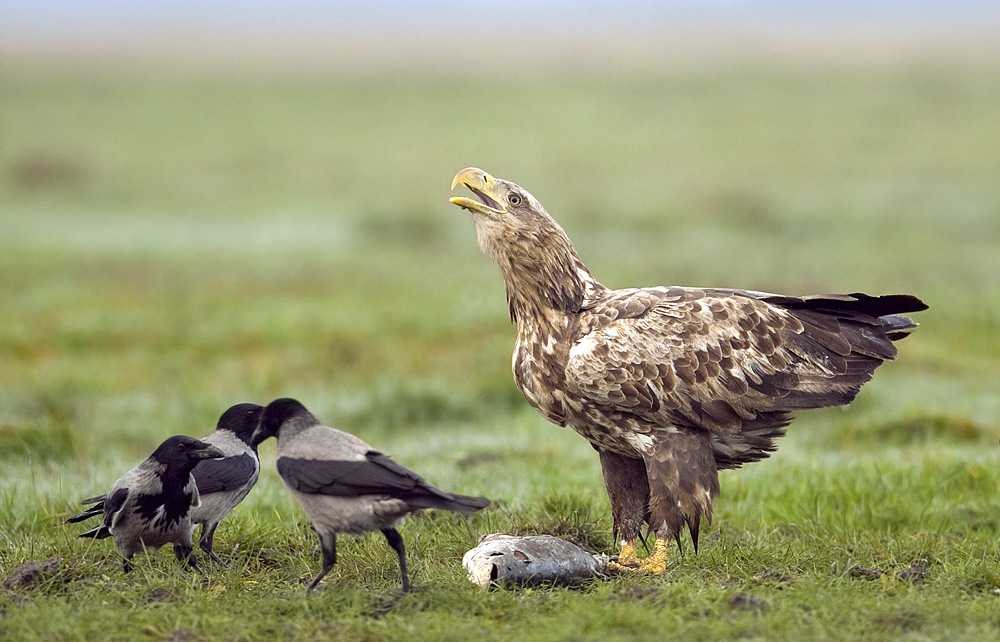
Adult White-tailed Eagle Photo: Attila Szilágyi
Our Eastern Imperial Eagle hide is operational but this year the Imperials not visiting it yet. We believe it is mainly bacause of the lack of autumn food in the area (so lots of juveniles left the area) and also the generally very mild winter. We still hope that it will get better in the second half of January. Amazingly, however, an adult Eastern Imperial Eagle was seen and photographed for the first time fro one of our hides on the 5th January this year by Csonka Péter.
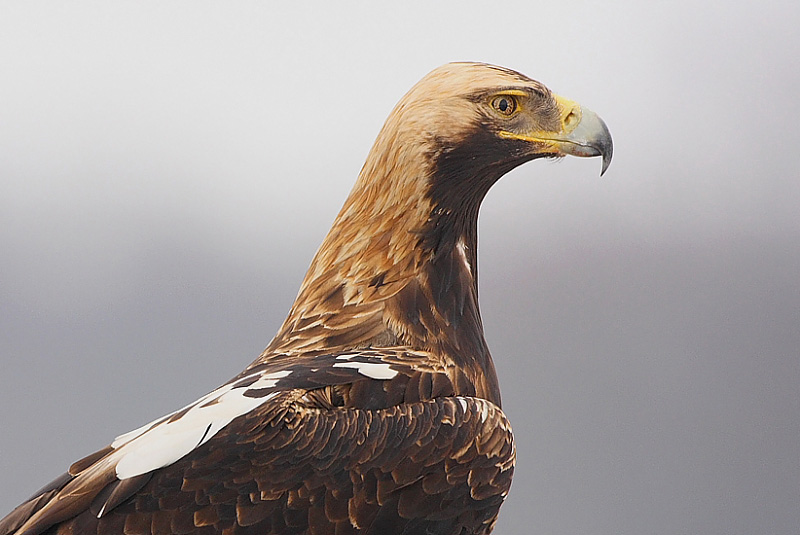
Adult Eastern Imperial Eagle Photo: Péter Csonka
We will have the annual eagle count on the 15th january so we will get to know the number of wintering eagles in Hungary. We will keep you posted!
Sakertour team

